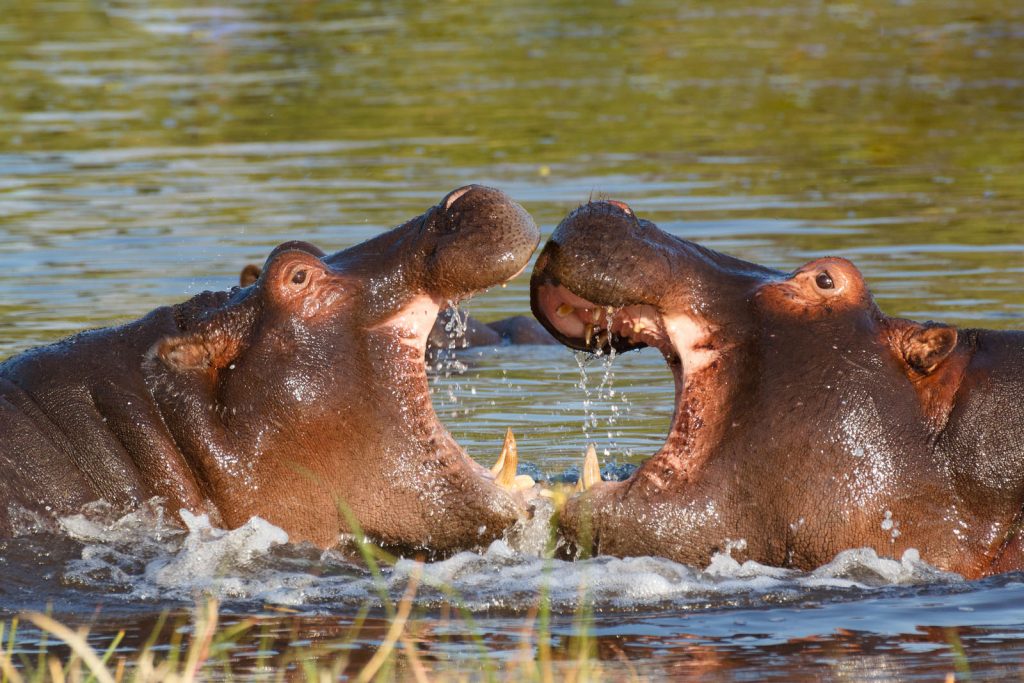Majestic Giants of the African Waters: Exploring the World of Hippos
The African Hippos | Overview. Africa, with its diverse and enchanting wildlife, is home to one of its most formidable and intriguing inhabitants—the hippopotamus. Often regarded as the river horse, hippos are known for their massive size, semi-aquatic lifestyle, and distinctive features. In this article, we will delve into the fascinating world of hippos, exploring their description, habitat, gestation period, and lifespan.
Description:
The hippopotamus, scientifically known as Hippopotamus amphibius, is the third-largest land mammal on Earth, following elephants and rhinoceroses. Adult hippos are massive, with males weighing between 1,500 to 3,200 kilograms (3,300 to 7,000 pounds) and females slightly smaller. Despite their rotund appearance, hippos are surprisingly agile and are capable of reaching impressive speeds, especially when threatened.
Their skin is hairless and nearly bulletproof, providing protection against the harsh African environment. The coloration varies from pinkish-brown to grayish-brown, and their eyes, nostrils, and ears are strategically positioned on the top of their heads, allowing them to stay submerged in water while still being aware of their surroundings.
Habitat: – The African Hippos | Overview
Hippos are predominantly found in rivers, lakes, and swamps throughout sub-Saharan Africa. They are highly adaptable and can thrive in a variety of aquatic environments, from freshwater lakes to slow-moving rivers. These creatures are most commonly associated with water, as they spend the majority of their day submerged to stay cool and avoid the harsh African sun.
Gestation Period:
The reproductive life of hippos is a critical aspect of their biology. Female hippos, known as cows, have a gestation period of approximately 8 months. A single calf is usually born underwater, and the mother helps guide it to the surface for its first breath. Calves are born fully developed and can swim shortly after birth, allowing them to navigate their semi-aquatic environment with ease.
Lifespan: – The African Hippos | Overview
The lifespan of hippos in the wild is around 40 to 50 years. Factors such as predation, habitat availability, and human-wildlife conflict can influence their life expectancy. Hippos face threats from predators like lions and crocodiles, as well as human activities, including poaching and habitat destruction.
Behavior and Social Structure:
Hippos are known for their semi-social nature. They form groups called pods, typically consisting of females and their offspring, led by a dominant male. These pods can vary in size, and males often engage in territorial disputes to establish dominance. Despite their seemingly docile appearance, hippos are considered one of Africa’s most dangerous animals, responsible for more human fatalities than lions or crocodiles.
Conservation Status:
While hippos are not currently classified as endangered, they face numerous threats. Habitat loss, poaching for their ivory teeth, and conflicts with humans are significant challenges. Conservation efforts are essential to protect these incredible creatures and ensure their survival for generations to come.
Conclusion: – The African Hippos | Overview
The hippopotamus, with its impressive size and unique characteristics, holds a special place in the tapestry of African wildlife. From their semi-aquatic lifestyle to their complex social structures, hippos are a testament to the marvels of nature. As we celebrate the diversity of life on Earth, let us also recognize the importance of conserving and protecting these majestic giants of the African waters.








